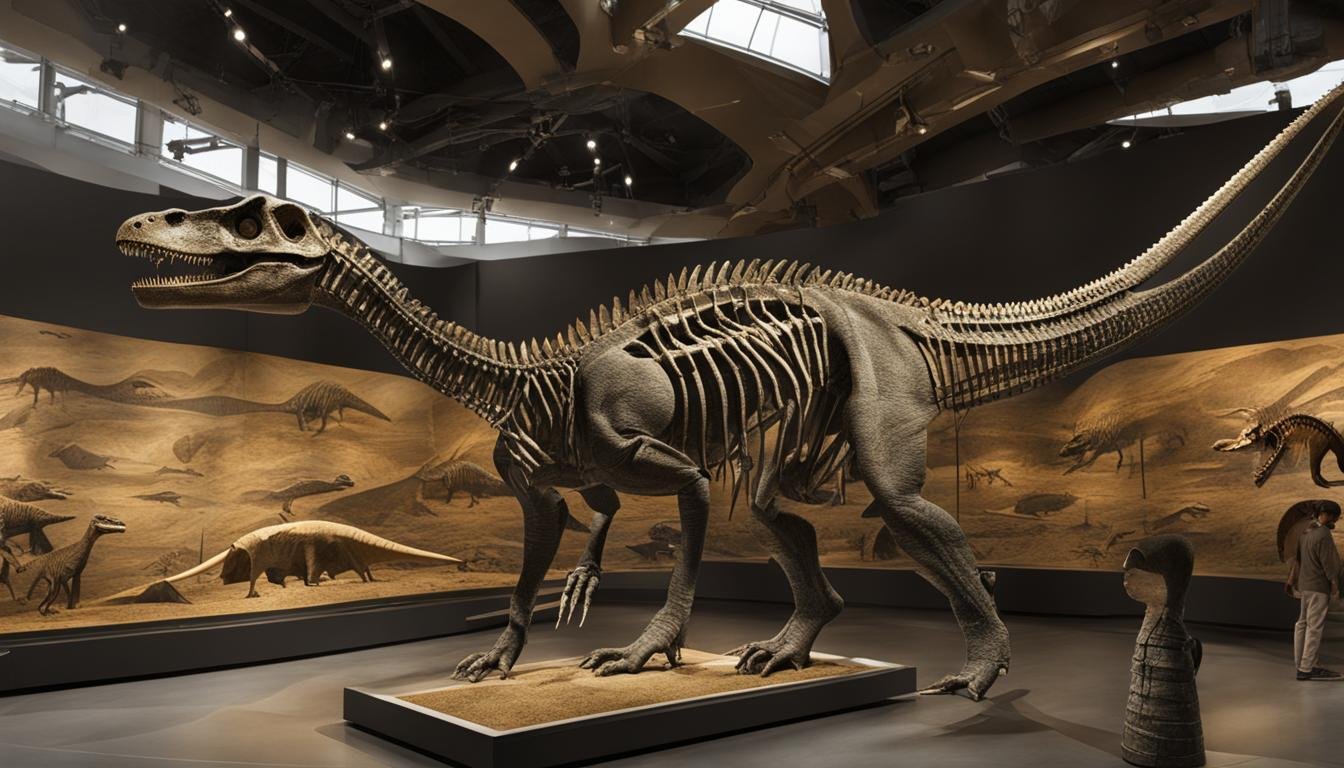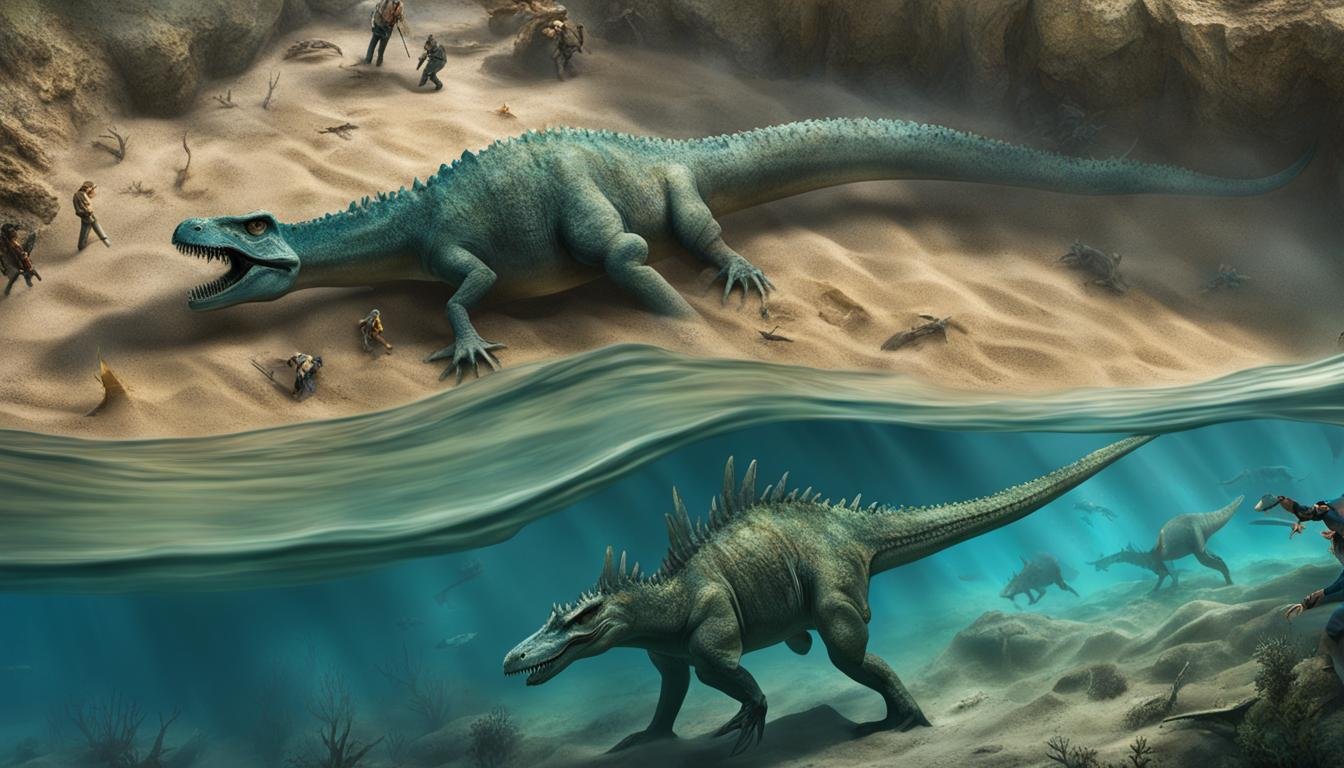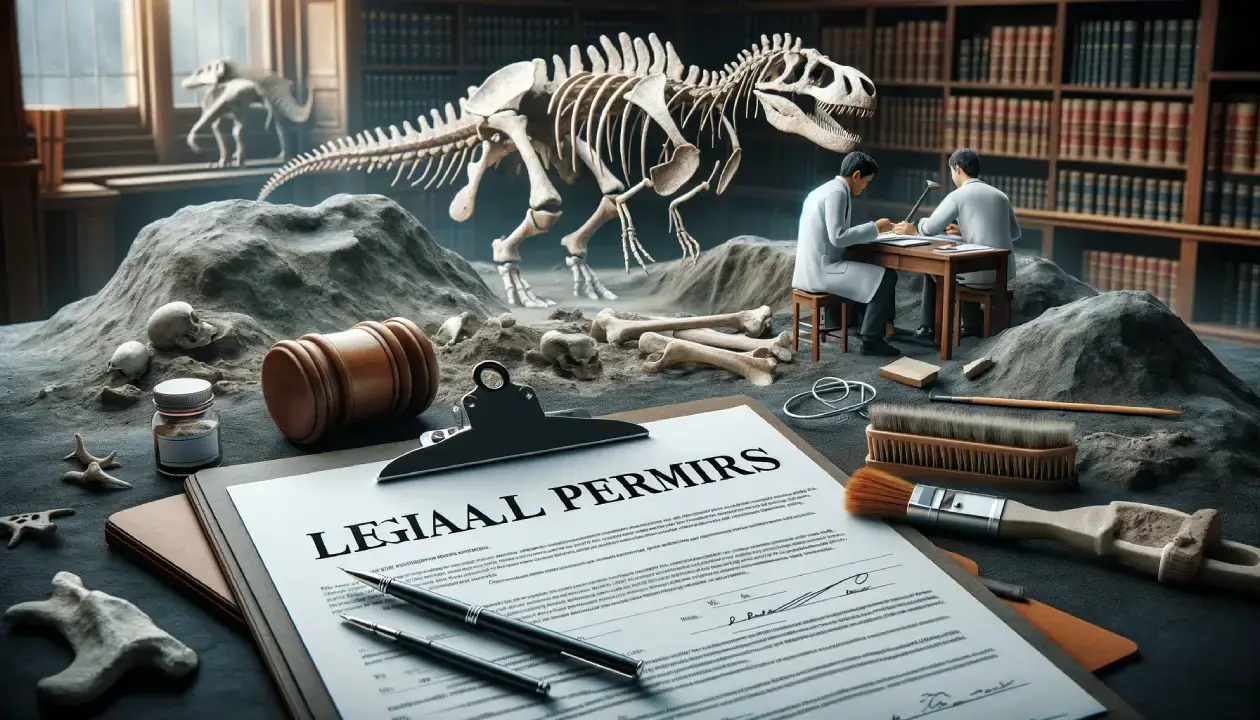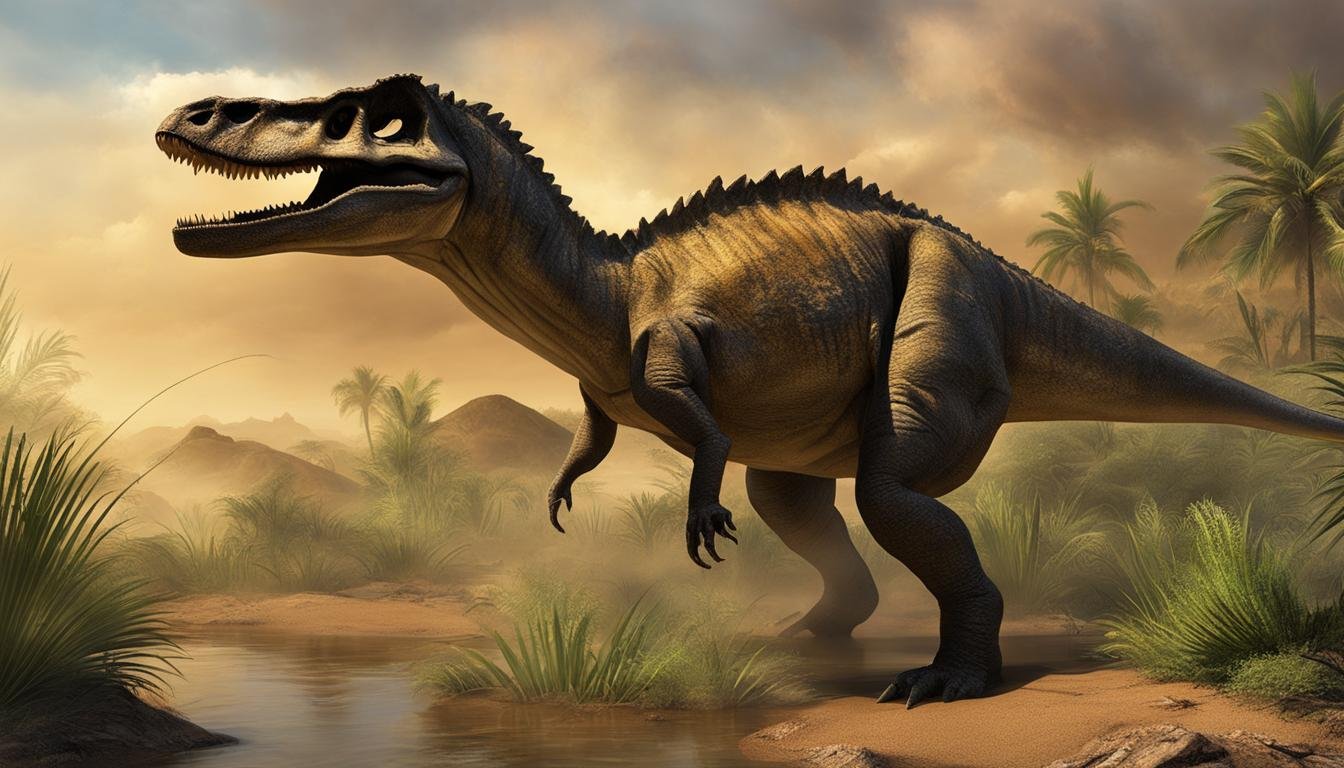When it comes to studying dinosaurs, fossil replicas are a valuable tool that allows us to explore and understand these ancient creatures. In this article, we will delve into the creation process of dinosaur fossil replicas and discover their significance in education and scientific research.
| Key Points | Takeaways |
|---|---|
| Role of Fossil Replicas | Fossil replicas provide detailed representations of dinosaurs for study and education. |
| Creation Process | Involves techniques like mold and cast, rapid prototyping, and laser scanning for accuracy. |
| Educational Value | Replicas are crucial for hands-on learning and understanding prehistoric life. |
| Preservation of History | They ensure valuable information is available for future generations without risking original fossils. |
| Artistic and Scientific Merger | The process of creating replicas combines artistry with scientific precision. |
| Advancements in Techniques | Modern technology has revolutionized the creation of realistic and precise replicas. |
| Significance in Research | Fossil replicas aid in scientific research by allowing safe study of rare or fragile fossils. |
Materials and Methods Used in Fossil Replication
Creating high-quality and museum-quality dinosaur replicas requires the use of various materials and methods. These ensure that the replicas are lifelike, accurate, and able to withstand the test of time. Liquid rubber or dental molding is commonly used as a flexible material to capture the intricate details of the original fossil. Fiberglass sheets are then used for reinforcement, providing strength and durability to the replica. The casts are typically made using resin or plastic, which can be dyed or painted to match the coloration of the original fossil.
| Materials | Methods |
|---|---|
| Liquid rubber / dental molding | Flexible material for capturing details |
| Fiberglass sheets | Reinforcement for strength and durability |
| Resin or plastic | Used for casting, can be dyed or painted |
Rapid prototyping techniques, such as computed tomography scans and laser sintering, are also employed in the creation of dinosaur replicas. These techniques allow for the production of solid piece replicas or replicas with missing bones. By using advanced technology, accurate and detailed replicas can be created, ensuring that every aspect of the original fossil is faithfully reproduced. The goal is to create high-quality replicas that are visually appealing and provide an immersive experience for viewers.
Creating lifelike dinosaur replicas involves a combination of artistry and scientific precision. Skilled artists and paleontologists work together to accurately recreate the appearance, texture, and details of the original fossils. The use of advanced materials and techniques ensures that the replicas are of museum-quality, allowing for a deeper understanding and appreciation of these ancient creatures.
By utilizing a combination of traditional mold and cast methods, as well as cutting-edge rapid prototyping techniques, the creation of high-quality dinosaur replicas is made possible. These replicas contribute to the preservation of scientific knowledge and allow for further research and study without risking damage to the original fossils. The materials and methods used in fossil replication play a crucial role in ensuring that future generations can continue to explore and learn about the fascinating world of dinosaurs.
Importance of Dinosaur Fossil Replicas in Education
Dinosaur fossil replicas play a crucial role in education. These expertly crafted and authentic dinosaur fossil replicas provide students and the general public with the opportunity to study and learn about dinosaurs firsthand. They allow for hands-on interaction and exploration, fostering a deeper understanding of these prehistoric creatures.
In museums and educational institutions, top-notch dinosaur replicas are used to enhance exhibits and educational programs, providing a visually appealing and informative experience. The use of realistic and accurate replicas helps bring the world of dinosaurs to life, making it accessible to a wider audience.
Replicas also enable researchers to conduct studies and experiments without risking damage to the original fossils. This is particularly important for rare or fragile specimens. By utilizing these replicas, researchers can explore different hypotheses and further our understanding of dinosaurs without putting the original fossils at risk.
“Dinosaur fossil replicas provide a unique opportunity for students and enthusiasts to engage with these fascinating creatures. They allow us to touch, feel, and study the fossils, enabling a deeper connection and understanding of our prehistoric past.” – Dr. Jane Marshall, Paleontologist
Benefits of Dinosaur Fossil Replicas in Education
1. Hands-on Learning: Dinosaur fossil replicas provide a tactile learning experience, allowing students to touch and examine the fossils up close.
2. Visual Aid: Realistic replicas help students visualize the appearance and features of dinosaurs, enhancing their understanding and imagination.
3. Preservation of Original Fossils: By using replicas, the original fossils can be preserved and protected from potential damage caused by excessive handling or environmental exposure.
4. Accessibility: Replicas allow a wider audience to access and learn about dinosaurs, as they can be displayed in museums, schools, and other educational settings.
| Benefits of Dinosaur Fossil Replicas in Education |
|---|
| Hands-on Learning |
| Visual Aid |
| Preservation of Original Fossils |
| Accessibility |
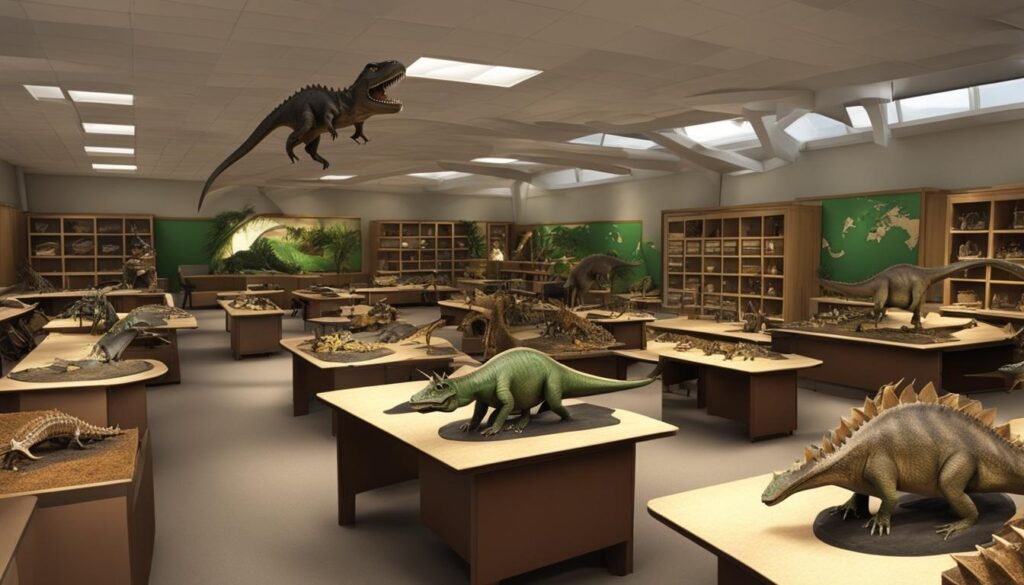
Overall, the use of dinosaur fossil replicas in education is invaluable. These replicas provide a unique and immersive learning experience, allowing students and enthusiasts to engage with the prehistoric world. They serve as important tools in preserving and protecting the original fossils while making the study of dinosaurs accessible to a wider audience. By incorporating expertly crafted and authentic dinosaur replicas into educational programs and exhibits, we can inspire a passion for paleontology and deepen our understanding of these magnificent creatures.
Preserving History Through Dinosaur Fossil Replicas
The creation of premium dinosaur replicas plays a vital role in preserving the history of these ancient creatures. By replicating rare, fragile, or inaccessible fossils with museum-quality replicas, we can ensure that valuable scientific information is safeguarded and accessible for future generations. These lifelike dinosaur fossils allow researchers and enthusiasts to study and learn from these specimens without risking damage to the originals.
One of the key benefits of using replica dinosaur fossils for preservation is the ability to conduct scientific research and analysis without direct contact to the fragile originals. This allows for in-depth exploration and experimentation to further our understanding of dinosaur species and their behaviors. Additionally, the use of museum-quality replicas ensures that important discoveries and insights into the past are not lost or destroyed over time.
Through the careful creation of lifelike dinosaur fossil replicas, we are able to capture the essence of these ancient creatures and present them in a visually appealing and informative manner. These replicas serve as educational tools in museums and institutions, allowing visitors to engage with the history of dinosaurs and gain a deeper appreciation for these incredible creatures. The preservation of history through premium dinosaur replicas ensures that future generations can continue to explore and learn about these fascinating species.
| Museum-quality Dinosaur Replicas: | Premium Dinosaur Replicas: |
|---|---|
| – Accurate representations of original fossils | – Lifelike and authentic recreations |
| – Preserves valuable scientific information | – Enables in-depth research and experimentation |
| – Allows for hands-on learning and exploration | – Enhances educational exhibits and programs |
| – Captivates and engages viewers | – Brings the world of dinosaurs to life |
The preservation of dinosaur fossils through replica creation is an essential component of scientific research, education, and historical preservation. By utilizing museum-quality and lifelike replicas, we can ensure that the history and knowledge of dinosaurs continue to inspire and educate future generations.
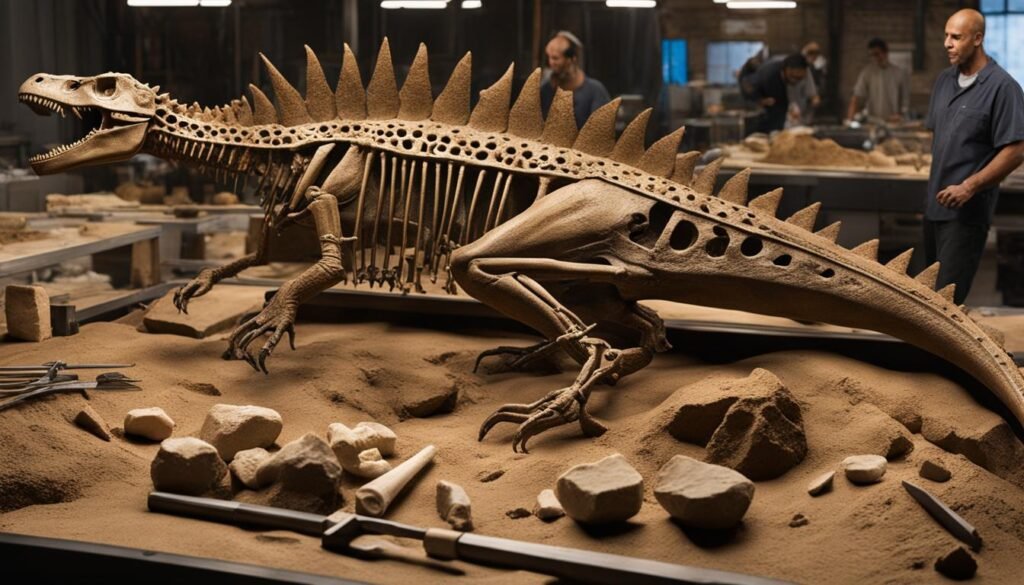
The Artistry Behind Dinosaur Fossil Replicas
Creating realistic dinosaur fossils is a true art form that requires exceptional skill and craftsmanship. Artists and paleontologists collaborate to meticulously recreate the appearance, texture, and intricacies of the original fossils. Through careful sculpting, molding, and painting techniques, expertly crafted dinosaur replicas are brought to life.
The goal of these replicas is to capture the authentic essence of the ancient creatures they represent. This involves replicating not only the bone structure but also the texture and coloration of the fossils. By incorporating realistic features such as muscle and skin, the replicas provide a vivid and accurate representation of the original specimens. The artistry behind these replicas is what captivates viewers and allows them to truly connect with the prehistoric world.
The artistry behind these replicas is what captivates viewers and allows them to truly connect with the prehistoric world.
Creating lifelike dinosaur replicas is a meticulous process that requires a deep understanding of the anatomy and characteristics of the species being replicated. The artists and paleontologists involved in this process immerse themselves in the study of fossils, ensuring that every detail is accurately depicted. By utilizing advanced artistic techniques, these replicas become faithful representations of the original specimens, providing invaluable educational and scientific resources.
The artistry behind dinosaur fossil replicas plays a crucial role in bridging the gap between science and art. It allows us to explore and appreciate the wonders of the ancient world, while also providing a tangible and interactive learning experience. Whether displayed in museums, used for educational purposes, or studied by researchers, these expertly crafted and authentic replicas bring dinosaurs to life in a way that fuels our imagination and expands our knowledge.
| Artistry Behind Dinosaur Fossil Replicas | Key Points |
|---|---|
| Collaboration between artists and paleontologists | Ensuring accuracy and authenticity |
| Careful sculpting, molding, and painting techniques | Recreating texture, coloration, and details |
| Incorporating realistic features like muscle and skin | Creating lifelike and captivating replicas |
| Deep understanding of anatomy and characteristics | Accurate representation of the original specimens |
| Bridge between science and art | Expanding knowledge and fueling imagination |
A Closer Look at Fossil Reconstruction Techniques
Fossil reconstruction techniques have significantly advanced over time, incorporating new technologies and methods to create top-notch and authentic dinosaur fossil replicas. While traditional mold and cast techniques are still commonly used, advanced techniques such as rapid prototyping and laser scanning have emerged as more prevalent approaches. These cutting-edge techniques enable the creation of accurate, detailed, and lifelike replica dinosaur fossils. By utilizing laser scanning and computed tomography scans to generate three-dimensional maps of fossils, paleontologists can precisely replicate the physical characteristics of the original specimens.
The use of rapid prototyping techniques has revolutionized the process of creating replica dinosaur fossils. By employing computed tomography scans, paleontologists are able to capture intricate details of the fossils. These scans are then used to create digital models, which can be further refined and modified before being transformed into physical replicas. With the guidance of these digital models, modern machines and tools can produce remarkably faithful reproductions that closely resemble the authentic dinosaur fossils.
Furthermore, the incorporation of laser scanning technology has significantly enhanced the accuracy of replica dinosaur fossils. Laser scanning is capable of capturing even the smallest details of fossils, including surface texture, bone structure, and minute imperfections. This wealth of data allows for the creation of highly precise and realistic replicas, ensuring that the fine nuances and characteristics of the original fossils are faithfully portrayed.
| Technique | Advantages | Limitations |
|---|---|---|
| Rapid Prototyping | – Enables the creation of highly detailed and accurate replicas – Allows for modifications and refinements during the digital modeling stage | – Costly equipment and materials – Requires specialized knowledge and expertise |
| Laser Scanning | – Captures precise details and nuances of fossils – Enhances the accuracy of replica dinosaur fossils | – Expensive scanning equipment – Requires skilled operators to ensure accurate scanning |
Through the utilization of these advanced reconstruction techniques, paleontologists are able to create replica dinosaur fossils that are indistinguishable from the authentic specimens. These replicas serve as valuable educational tools, allowing students, researchers, and the general public to engage with and study the ancient world of dinosaurs. The faithful replication of fossils not only preserves their historical significance but also facilitates the exploration and understanding of these magnificent creatures.
By continuously refining and advancing fossil replication techniques, the scientific community ensures that future generations can continue to explore and learn from the rich history of dinosaurs. The use of top-notch and authentic replica dinosaur fossils enables researchers to conduct in-depth studies and experiments, while also preserving and protecting the original fossils. These techniques, combined with the artistry and expertise of paleontologists, allow us to delve deeper into the mysteries of the past and gain a comprehensive understanding of the fascinating world of dinosaurs.
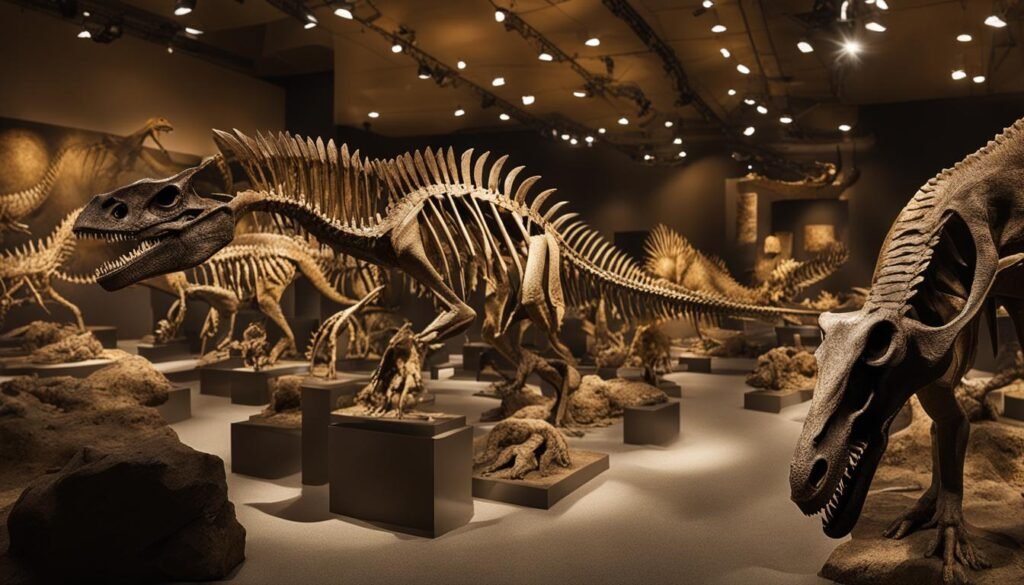
Conclusion
Dinosaur fossil replicas play a significant role in education and science by providing accurate and detailed representations of ancient creatures. The creation of these replicas involves various methods and materials, including mold and cast techniques, rapid prototyping, and laser scanning.
Through the artistry of skilled artists and paleontologists, lifelike and authentic replicas are created, enabling us to study, learn, and preserve the history of dinosaurs. These replicas are essential for educational institutions, museums, and scientific research, allowing for a deeper understanding and appreciation of the prehistoric world.
The continued advancement of fossil replication techniques ensures that future generations can continue to explore and learn about these fascinating creatures.

